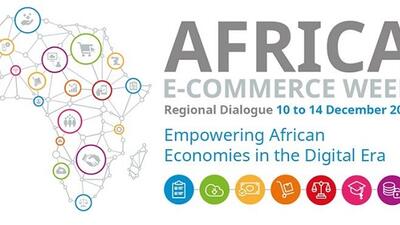

Knitting the digital spaghetti: building Enterprise Resource Planning to support e-commerce in Rwanda
Online marketplaces can create the false impression that e-commerce is simple.
In fact, behind the simple “click to order” button that puts products into a checkout basket, and onward to payment and delivery, there is a complex set of processes that must work together seamlessly and reliably. The right product needs to be delivered to the customer, payments handled and accounted for, and information available on the level of stock and orders.
All of these processes need to be defined and described in work instructions so that the team responsible knows what is expected of them, and how to update the information in digital systems. And those digital systems need designing in order to respect the rules for how the e-commerce platform wishes to work.
A typical Enterprise Resource Planning (ERP) package that supports e-commerce platforms – and there are several, including Magento, Prestashop and Odoo – consists of modules which have discrete functionalities.
For instance, a suppliers module may record goods received from suppliers to the platform: it should log the receipt of inbound goods and check the identity and information about the supplier. Warehouse staff will access another module to prepare and organise orders, ensuring that the order is complete and correct, before confirming operations in a transport module.
All of these modules remain hidden to the customer – who sees the frontend of the website or app, and trusts that the other processes are all managed seamlessly and reliably.
In Rwanda, one of Africa’s most forward-thinking economies, a hub for providing storage, transportation and customer services is supported by an ERP system that has been developed by the International Trade Centre, together with software engineers in Rwanda and India.
How it works
A set of business processes describe how staff should receive goods from enterprises wishing to use its services: the ERP includes modules which set up the business relationships with these enterprises and record the goods consigned to the warehouse, allocating a coded place on the shelves.
The warehouse staff work from order processing lists to build shipments: picking goods from the shelves according to work instructions generated by the ERP. Accounting staff track stocks and payments and ensure that the hub – also known as the E-commerce Service Centre or ECSC - can meet its commitments to customers, and obligations to consignee companies and tax authorities.
Joanna Karolik, an ITC e-commerce consultant who works with Rwandan staff at partner firm Sawa Citi to build the new business processes and a digital map of the ECSC, explains the functioning of the platform.
‘When you take a look at the admin side of the platform it looks like a collection of separate applications – all relatively simple in themselves,’ she said. ‘One handles stock, another orders and a third accounting. The complexity comes from understanding the interdependency of modules. So for instance, in order to calculate the price of a shipment, you need to know the weight of the product: a business rule for the creation of a new product in the system must require you to enter its weight.’
Ms. Karolik is systematically stepping through the many processes that must take place in order for the entire set of modules to work together.
‘It may sound complicated, but it’s best taken step by step – following a simple process such as ‘Receiving Goods’ and checking that it all works as expected from start to finish’, she said. Doing this in a repeated manner with all of the business processes soon identifies where bugs need to be addressed, she added.
‘I am in regular contact with the developers in Kigali and India, and we work through changes on a daily basis,’ Ms. Karolik said.
Building a complete set of data that describes all of the companies and their products can be an arduous task.
ITC Project Manager Sebastian Ioannitis-McColl said: ‘Small firms very often have little idea about structuring how they name their products and their variations. We are careful to explain the critical importance of being systematic in how products are described: the information about its characteristics such as colour, size and weight recorded.’
The training has to extend to support staff at Sawa Citi, the partner that will manage the ECSC. Ms. Karolik explained how this works with the Rwandan team.
Digital spaghetti
‘Each of the teams in the ECSC will only see the part of the system that concerns them,’ she said.
‘Staff in the warehouse will have access to tools that are relevant to their work – such as seeing the instructions for picking and packing orders. However, they also need digital tools translating into real-world processes. So this is why we spend time practising common activities – such as preparing an outbound order – and writing the steps down in a simple to follow set of rules.’
Ms. Karolik added: ‘It’s best not to try to define too many processes at once – otherwise you can get lost in the digital spaghetti! Step by step and following real-world processes helps to keep things clear. We also look as much as possible to keep it simple.’
The effort is worthwhile – and carries implications beyond the smooth running of warehouse operations. The structure of the ECSC and its operations is a model of discipline: being clear about standards, what is expected and writing the rules down. This is perhaps the single most significant transformation that local businesses are required to make: getting formal about their operations and commitments.













